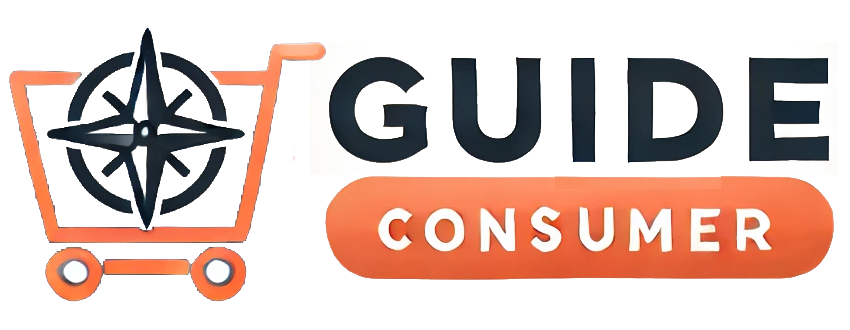Car insurance can feel like a puzzle: juggling monthly premiums, coverage limits, deductibles, and a host of other details. Yet having the right policy is crucial for protecting both your vehicle and your financial well-being. Whether you’re a first-time buyer or rethinking a current policy, understanding the ins and outs of car insurance will help you make more confident, cost-effective decisions.
1. Understand the Various Coverage Types
Car insurance isn’t a one-size-fits-all proposition. Your policy typically comprises several coverage components, each serving different purposes. Knowing what’s covered—and what isn’t—prevents surprises when you need to file a claim.
Core Coverage Types
- Liability
- Bodily Injury Liability: Pays for medical bills and injuries you cause to others in an accident.
- Property Damage Liability: Covers damage you cause to other vehicles or property.
- Why It’s Vital: Liability coverage is mandatory in most states. Higher limits can shield you from significant out-of-pocket costs if you’re at fault in a major accident.
- Collision
- Purpose: Covers damages to your car if you collide with another vehicle or object (like a fence or pole).
- Optional or Required?: Although optional, it’s often required by lenders if you finance or lease your car.
- Comprehensive
- Purpose: Pays for non-collision events (theft, vandalism, fire, natural disasters, animal strikes) that damage your vehicle.
- Benefits: Offers broader protection—particularly useful if you live in areas prone to hail, flooding, or high auto-theft rates.
- Uninsured/Underinsured Motorist
- Goal: Protects you if the at-fault driver has insufficient (or no) insurance to cover your damages and medical costs.
- When It’s Crucial: Areas with high numbers of uninsured drivers.
- Personal Injury Protection (PIP) / Medical Payments
- Purpose: Covers medical expenses (and sometimes lost wages) for you and your passengers, regardless of fault.
- State-Specific: PIP is mandatory in certain “no-fault” states; Medical Payments coverage is optional in many others.
2. Assess Your Personal Driving Habits and Risk
Your premiums and coverage choices should align with how, where, and how often you drive. For example, a city commuter might be more prone to fender benders and theft risk, while a rural driver could worry about animal collisions or remote roads.
Key Factors
- Mileage: More miles typically mean higher accident risk, potentially increasing rates. If you rarely drive (e.g., under 7,500 miles/year), look for low-mileage discounts.
- Commute vs. Occasional: Daily city traffic can heighten accident odds; be prepared for slightly higher costs. Occasional drivers could find usage-based policies beneficial.
- Vehicle Use: Business use (delivering goods, rideshare driving) often requires extra coverage or endorsements.
- Location: High-theft regions or places with extreme weather can impact premiums and coverage needs.
3. Get Quotes from Multiple Insurers
Car insurance premiums vary widely between providers—even with identical coverage levels. Gathering quotes from at least three or four companies helps you benchmark fair pricing and find extra perks or discounts.
How to Compare
- Consistent Coverage: When requesting quotes, specify the same liability limits, deductibles, and any extras (e.g., roadside assistance). This ensures an apples-to-apples comparison.
- Bundling: If you have homeowners or renters insurance, see if combining policies with one insurer yields savings.
- Online Tools and Agents: Comparison websites streamline the quote process, while local agents can offer personalized advice and highlight insurer reputations in your area.
4. Consider Appropriate Coverage Limits
While meeting your state’s minimum liability standards is non-negotiable, you may want more coverage. Bare-minimum limits can leave you personally responsible for large bills if you cause a serious accident.
Liability Limits
- Bodily Injury: Commonly expressed as two numbers (e.g., $100,000 per person/$300,000 per accident).
- Property Damage: Typically a single amount (e.g., $50,000 or $100,000).
Evaluating Limits
- Your Assets: Drivers with substantial assets or higher income should consider elevated liability limits to protect against lawsuits.
- Vehicle Value: If your car is older and not worth much, you might opt out of collision or comprehensive. But if losing the car would be a financial hit, retaining these coverages is wise.

5. Balancing Deductibles and Premiums
Collision and comprehensive coverage typically come with deductibles—the amount you pay out of pocket before insurance kicks in. A higher deductible lowers monthly premiums but means greater upfront cost if you file a claim.
Pros and Cons
- High Deductible: Smaller monthly bills, riskier if an accident occurs and you must pay, say, $1,000 or $2,000 before coverage.
- Low Deductible: More expensive monthly premiums, but you pay less out of pocket after a covered incident.
6. Explore Discounts
Insurers compete for your business, offering discounts that shave substantial sums off your premiums. Familiarizing yourself with common rebates can help you stack savings.
Common Discounts
- Safe Driver: Clean driving record, possibly verified by telematics or usage-based apps.
- Bundling Policies: Multi-policy (auto + home + life) can yield sizable discounts.
- Good Student: Young drivers with solid grades.
- Anti-Theft Device: Alarms or vehicle tracking systems.
- Defensive Driving Course: Some insurers reduce rates if you’ve taken a driver safety course.
- Pay-in-Full: Paying your annual or semi-annual premium upfront rather than monthly.
7. Check Insurer Financial Strength and Customer Service Reputation
Insurance is about reliability. Even a low premium loses its appeal if a company handles claims slowly or struggles financially to pay them out. A stable insurer with solid customer service is worth paying a little extra.
Research Tips
- Financial Ratings: Organizations like A.M. Best or Standard & Poor’s grade insurers’ financial stability.
- Customer Reviews: Look for satisfaction scores from sources like J.D. Power or Consumer Reports.
- Word of Mouth: Friends or family might offer personal anecdotes about claim processes or difficulties.
8. Reevaluate Your Policy Over Time
Life circumstances change—maybe you move to a safer neighborhood, buy a home with a garage, or your teenager heads off to college. Adjusting coverage to reflect new realities prevents paying for unnecessary protection or risking underinsurance.
When to Revisit
- Major Life Events: Relocation, marriage, or adding a new driver in the household.
- Vehicle Changes: Upgrading to a newer car or deciding an older vehicle no longer needs full coverage.
- Mileage Adjustments: If your commute shrinks or you switch to remote work.
- Annual Renewal: Use policy renewal dates as checkpoints to compare quotes and confirm coverage still fits your needs.
Securing the best car insurance for your needs is a matter of aligning coverage types, limits, and premiums with your unique driving circumstances. Start with a solid understanding of liability, collision, and comprehensive coverage, then decide if you need other add-ons like uninsured motorist protection or personal injury protection. Assess your driving habits, annual mileage, and regional risks—like theft or natural disasters—to pinpoint which coverage levels make sense. Shopping around among multiple insurers is crucial, as rates can vary considerably even with similar coverage. Remember to leverage discounts whenever possible, weigh your deductible against monthly premiums, and research an insurer’s track record before signing on the dotted line.
Don’t forget that car insurance isn’t a one-and-done decision. Life changes—like buying a new car, moving, or adding a teen driver—can shift your coverage requirements. Checking in every year or two ensures your policy remains aligned with your budget and any new risks you face. By staying informed, comparing quotes, and taking advantage of relevant discounts, you can enjoy not only the financial security car insurance offers but also the peace of mind that comes with knowing you’re well-protected on the road.


